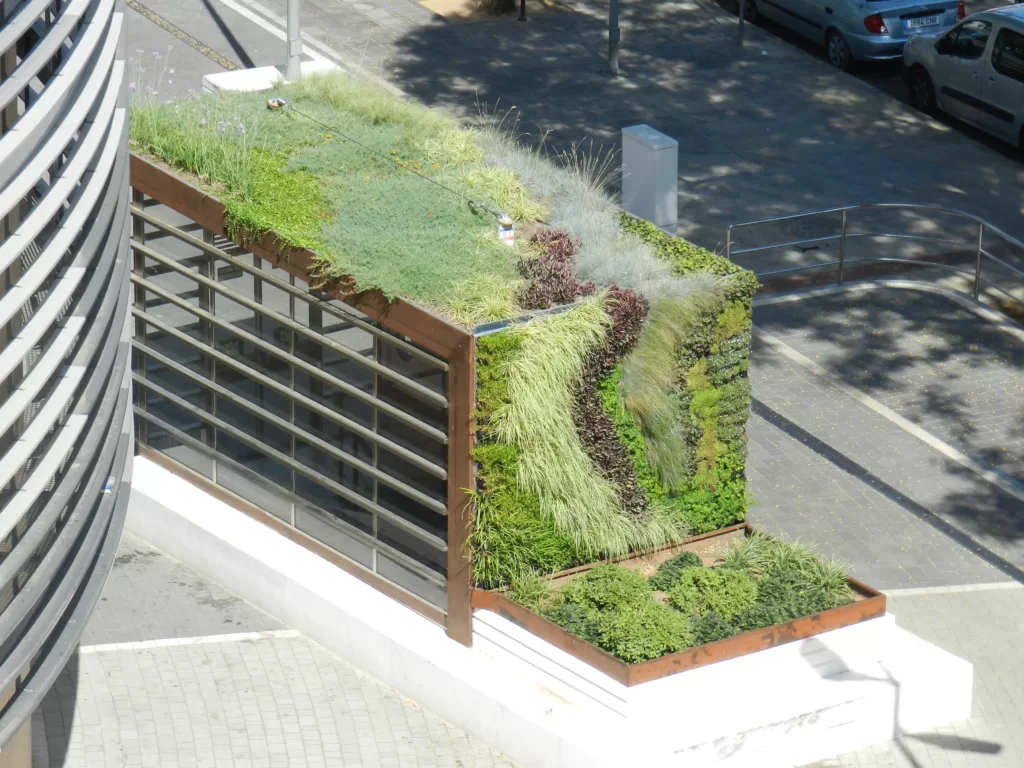Posted by Kristyn Maslog-Levis on Wed, Apr 30, 2014 @ 7:14 PM
The Amazing Benefits of Green Walls, Roofs and Facades
In the ever-evolving world of sustainable architecture and urban design, the concept of integrating greenery into the built environment has garnered remarkable attention. From vibrant vertical gardens adorning city facades to lush rooftop havens overlooking bustling streets, the incorporation of green walls, roofs, and facades has transcended mere aesthetics, offering a plethora of astonishing benefits. This blog delves into the captivating realm of these living installations, uncovering the ways in which they contribute to environmental, social, and even psychological well-being.
Victoria’s Growing Green Guide, a project by The University of Melbourne, The Inner Melbourne Action Plan and several industry experts, is pushing for green roofs as a more cost-effective alternative to answer heating and cooling needs.
Watch our Webinar with Grant Radbourne to discover the range of advantages using living walls has in your urban environment
The guide provides technical advice on how to design, build and manage green roofs, walls and facades so they can provide multiple benefits over a long period of time.
Speak to our Living Wall Legend Grant Radbourne to help bring your vision to life.

Newly Planted Living Wall Polls
Why you need Green Walls, Roofs and Facades
According to the guide, green roofs, walls and facades provide several benefits to the community and its residents. Here are some excerpts from the report:
- Building owners and developers are increasingly installing green roofs, walls or facades to add a point of difference, increase commercial returns, provide visual appeal and turn a building into a local landmark. It increases property value as well as other benefits for building owners. Green roofs can lengthen the lifespan of a traditional roof surface. They protect a roof’s waterproof membrane from solar radiation and add insulating materials to reduce severe temperature fluctuations on the roof surface. The report says early design discussions will help ensure that the roof, wall, or façade can be planned and incorporated in other building aspects such as drainage, irrigation, lighting and weight loading.

- Green roofs absorb and retain rainwater and can be used to manage stormwater run-off in urban environments. They can also filter particulates and pollutants. Stormwater run-off can be reduced or slowed because it is stored in the substrate. Additional water storage capacity in green roof systems can be provided through incorporation of a water retentive layer or drainage layer at the base of the green roof.
Related: Top Australian Plants for Green Walls and Roofs - It reduces building heating and cooling requirements. Green walls and facades can reduce heat gain in summer by directly shading the building surface. Green roofs reduce heat transfer through the roof and ambient temperatures on the roof surface, improving the performance of heating, ventilation and air conditioning (HVAC) systems.

- Green walls, roofs and facades reduce the urban heat island effect. Temperatures can be reduced by covering a roof or wall with a layer of vegetation that shades building materials, which would otherwise absorb heat. Evapotranspiration provides cooling effects, as water is evaporated from the soil and plants transpire by taking water in through roots and releasing it through leaves. The report suggests a city-wide strategy to implement green roofs, walls and facades to help mitigate some of the negative consequences of the UHI effect.
- Green roofs can contribute to and enhance biodiversity by providing new urban habitats and specific habitats for rare or important species of plants or animals. It can also provide a link or corridor across urban ecological deserts and assist in migration of invertebrates and birds.

- These green infrastructures can increase amenity and provide opportunities for reduced energy consumption, food production, recreation, relaxation or commercial ventures. Green roofs, walls and facades can be used for multi-level greenery designs that connect with ground level green spaces.
- Finally, they also contribute to the removal of gaseous pollutants from the air. Plants with a high foliage density or with textured leaf surfaces that trap small particles also assist in removing particulate pollution, through dry deposition on the foliage or through rain wash.
The good news is that most building surfaces have the potential for greening. It’s just a matter of knowing how to do it properly to get the most benefits out of it.


